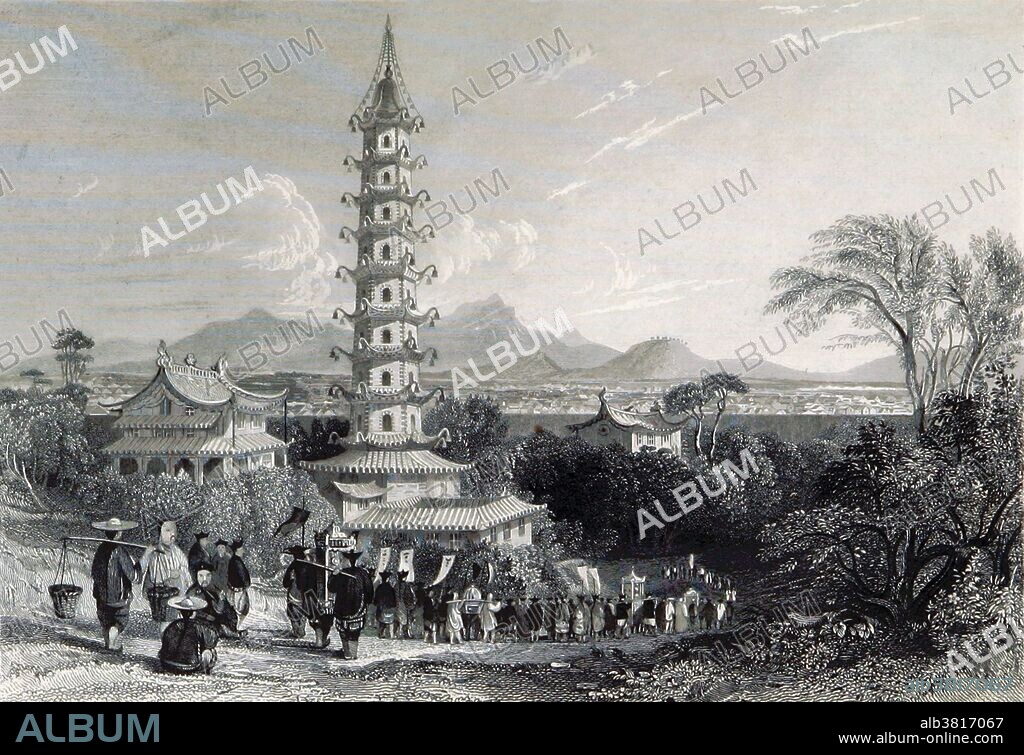alb3817067
Porcelain Tower of Nanjing, 19th Century

|
Añadir a otro lightbox |
|
Añadir a otro lightbox |



¿Ya tienes cuenta? Iniciar sesión
¿No tienes cuenta? Regístrate
Compra esta imagen

Título:
Porcelain Tower of Nanjing, 19th Century
Descripción:
Ver traducción automática
The Porcelain Tower (or Porcelain Pagoda) of Nanjing, also known as Bao'ensi (Temple of Repaid Gratitude), is a historical site located on the south bank of external Qinhuai River in Nanjing, China. It was a pagoda constructed in the 15th century during the Ming Dynasty. The tower was octagonal with a base of about 97 feet in diameter. When it was built, the tower was one of the largest buildings in China, rising up to a height of 260 feet with nine stories and a staircase in the middle of the pagoda, which spiraled upwards for 184 steps. The top of the roof was marked by a golden pineapple. It was first discovered by the Western world when 17th century travelers visited it, sometimes listing it as one of the Seven Wonders of the World. It was mostly destroyed in the 19th century during the course of the Taiping Rebellion. Entitled: "Der Porcellantheum zu Nanking." Image taken from page 403 of China, historisch romantisch, malerisch (historically romantic, picturesque). A translation by Thomas Allom with historical and descriptive notes by the Rev. G. N. Wright, published 1843.
Personas:
Crédito:
Album / Science Source / British Library
Autorizaciones:
Modelo: No - Propiedad: No
¿Preguntas relacionadas con los derechos?
¿Preguntas relacionadas con los derechos?
Tamaño imagen:
3900 x 2673 px | 29.8 MB
Tamaño impresión:
33.0 x 22.6 cm | 13.0 x 8.9 in (300 dpi)
Palabras clave:
1843 • ARTE • ASIA • ASIATICO • BLANCO Y NEGRO • CHINA • CHINO • DIBUJO • DINASTIA CH'ING • GRABADO • HISTORIA • HISTORICO • ILUSTRACION • NANJING • OBRA DE ARTE • PAGODA • SIGLO XIX • THOMAS ALLOM • TORRE
 Pinterest
Pinterest Twitter
Twitter Facebook
Facebook Copiar enlace
Copiar enlace Email
Email
